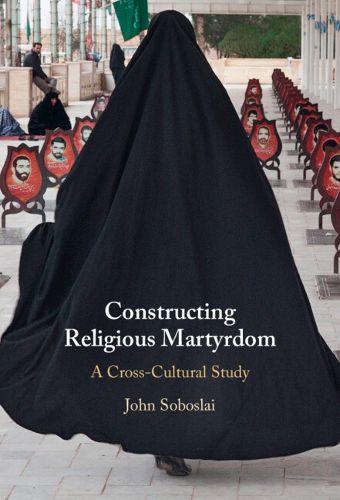Readings Newsletter
Become a Readings Member to make your shopping experience even easier.
Sign in or sign up for free!
You’re not far away from qualifying for FREE standard shipping within Australia
You’ve qualified for FREE standard shipping within Australia
The cart is loading…






Martyrdom is a phenomenon common to many of the world's religious traditions. But why? In this study, John Soboslai offers insights into the practices of self-sacrifice within specific sociopolitical contexts. Providing a new understanding of martyrdom through the lens of political theology, he analyzes discourses and performances in four religious traditions during social and political crises, beginning with second-century Christianity in Asia Minor, where the term 'martyr' first took its meaning. He also analyzes Shi'a Islam in the 1980s, when 'suicide bombing' first appeared as a strategy in West Asia; global Sikhism during World War I, where martyrs stood for and against the British Raj; and twenty-first-century Tibetan Buddhism, where self-immolators used their bodies in opposition to the programs of the People's Republic of China. Presenting a new theory of martyrdom linked to constructions of sovereign authority, Soboslai reveals common features of self-sacrifice and demonstrates how bodily performances buttress conceptions of authority.
$9.00 standard shipping within Australia
FREE standard shipping within Australia for orders over $100.00
Express & International shipping calculated at checkout
Martyrdom is a phenomenon common to many of the world's religious traditions. But why? In this study, John Soboslai offers insights into the practices of self-sacrifice within specific sociopolitical contexts. Providing a new understanding of martyrdom through the lens of political theology, he analyzes discourses and performances in four religious traditions during social and political crises, beginning with second-century Christianity in Asia Minor, where the term 'martyr' first took its meaning. He also analyzes Shi'a Islam in the 1980s, when 'suicide bombing' first appeared as a strategy in West Asia; global Sikhism during World War I, where martyrs stood for and against the British Raj; and twenty-first-century Tibetan Buddhism, where self-immolators used their bodies in opposition to the programs of the People's Republic of China. Presenting a new theory of martyrdom linked to constructions of sovereign authority, Soboslai reveals common features of self-sacrifice and demonstrates how bodily performances buttress conceptions of authority.